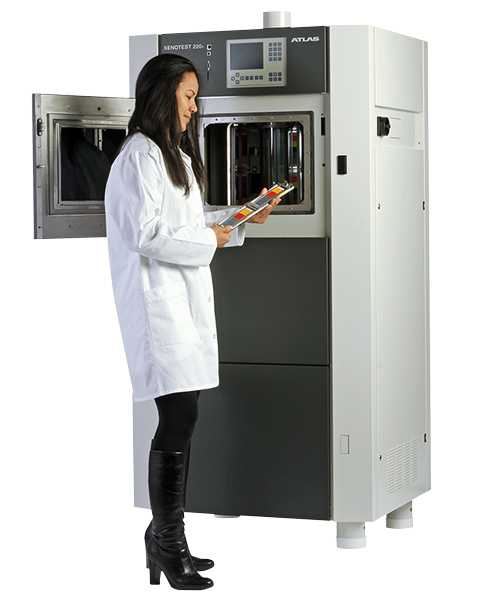Aging Test Chamber Operation Instructions

The Atlas aging chamber is extremely simple. Specially designed sample racks make sample fixation and evaluation very simple. Programming more intuitive, all models of equipment are fully automatic, in the case of unregulated 24 hours a day, 7 days a week continuous operation.

Sample installation:
The test sample in the Atlas test chamber is fixed on an approximately horizontal plane. This flat sample is placed in a flexible manner to test many samples of different sizes, shapes and types.
Atlas uses a rotating frame to place the sample vertically. This configuration is ideal for testing thinner, flat samples (such as textiles, paints and coatings). The standard sample racks are available in a variety of sizes for different samples. For bottles, textile testing, etc. can also choose a special sample rack.
Program settings:
Based on a practical and easy-to-use design, the Atlas controller can be programmed in five selectable languages (English, French, Spanish, Italian, German). The user can program up to 10 test cycles in a memory with a power-down backup function.
Standards compliant:
Each Atlas test chamber is factory tested and the criteria used for the test are selected by you and preloaded into the memory. This includes ISO, ASTM, SAE, AATCC, IEC, GM and VW aging and lightfastness standards.
Test calibration:
The Atlas chamber is equipped with multiple control sensors to monitor the environment inside the box. All Atlas sensors require periodic calibration or replacement to ensure accurate results. Atlas's operation is simple and low cost.
radioactivity:
Users need to regularly calibrate the airborne SOLAR EYE radiation sensor for the Atlas test chamber to ensure accurate results. Calibration with the CR20 irradiance calibrator The Q-SUN chamber is simple and takes only a few minutes. It should be noted that CR20 is equipped with 340nm, 420nm or 300-400nm (TUV) sensors. The sensor must match the sensor type and filter type actually used in the Xe-3 test chamber. The CR20 irradiance calibrator is required to be returned to Q-Lab once a year for calibration, which is not expensive. Our calibration laboratories have been certified by A2LA and UKAS (ISO 17025).
Relative temperature:
The blackboard temperature sensor and optional inbox air temperature sensors for the Atlas test chamber are also subject to periodic calibration by the user. Calibration with the CT202 Temperature Calibrator The Q-SUN chamber is simple and takes only a few minutes. It is important to note that the CT202 temperature calibrator is equipped with a non-insulated blackboard (CT202 / BP) or insulated blackboard (CT202 / IBP) sensor. The sensor must match the sensor type actually used in the Xe-1 test chamber. The air temperature sensors in the Xe-2 and Xe-3 are inexpensive and need to be replaced once a year. The CT202 thermometer is required to be returned to Q-Lab once a year for recalibration, which is not expensive.
Relative humidity:
Atlas models with relative humidity control. These models simultaneously control, monitor and display relative humidity, blackboard (black mark) temperature and air temperature in the box.
Use maintenance:
The Atlas controller includes a complete self-diagnostic error check. The controller continually monitors the status and performance of all systems. It also displays simple warning messages, routine maintenance reminders, and performs a safe shutdown (if required) operation. Often regular maintenance components are available for lamp, sensor calibration and inexpensive air filters.
2017-07-07 17:21

